Bamboo proponents the world over have touted the plant as a miracle cure for climate change and global warming. Bamboo’s purported capacity for carbon sequestration is one of the most important factors that makes the plant so important in the effort to save the planet and heal the atmosphere.
But in the age of fake news and mass sensationalism, can we trust these claims? Perhaps what we are hearing is actually a mix of scientific truth and wishful exaggeration. There’s no doubt that bamboo, the fastest-growing plant on earth, has immense potential as a non-toxic, renewable resource with hundreds of commercial applications.
Indeed, some varieties of bamboo can grow more than a meter in a day, that’s more than 3.3 feet in a 24-hour period, making it the fastest growing plant in the world. This breakneck growth rate occurs with individual culms at the peak of the growing season and in ideal growing conditions.
A mature grove of bamboo, according to numerous experts, can also generate 30 to 35 percent more oxygen than an equal area of forest. To produce this oxygen, the bamboo draws carbon dioxide from the atmosphere in the process of photosynthesis. The plant then stores that carbon in its roots and above-ground biomass. This is one of bamboo’s greatest contributions to the battle against global warming.
NOTE: This article originally appeared in July 2020, most recently updated in March 2024.
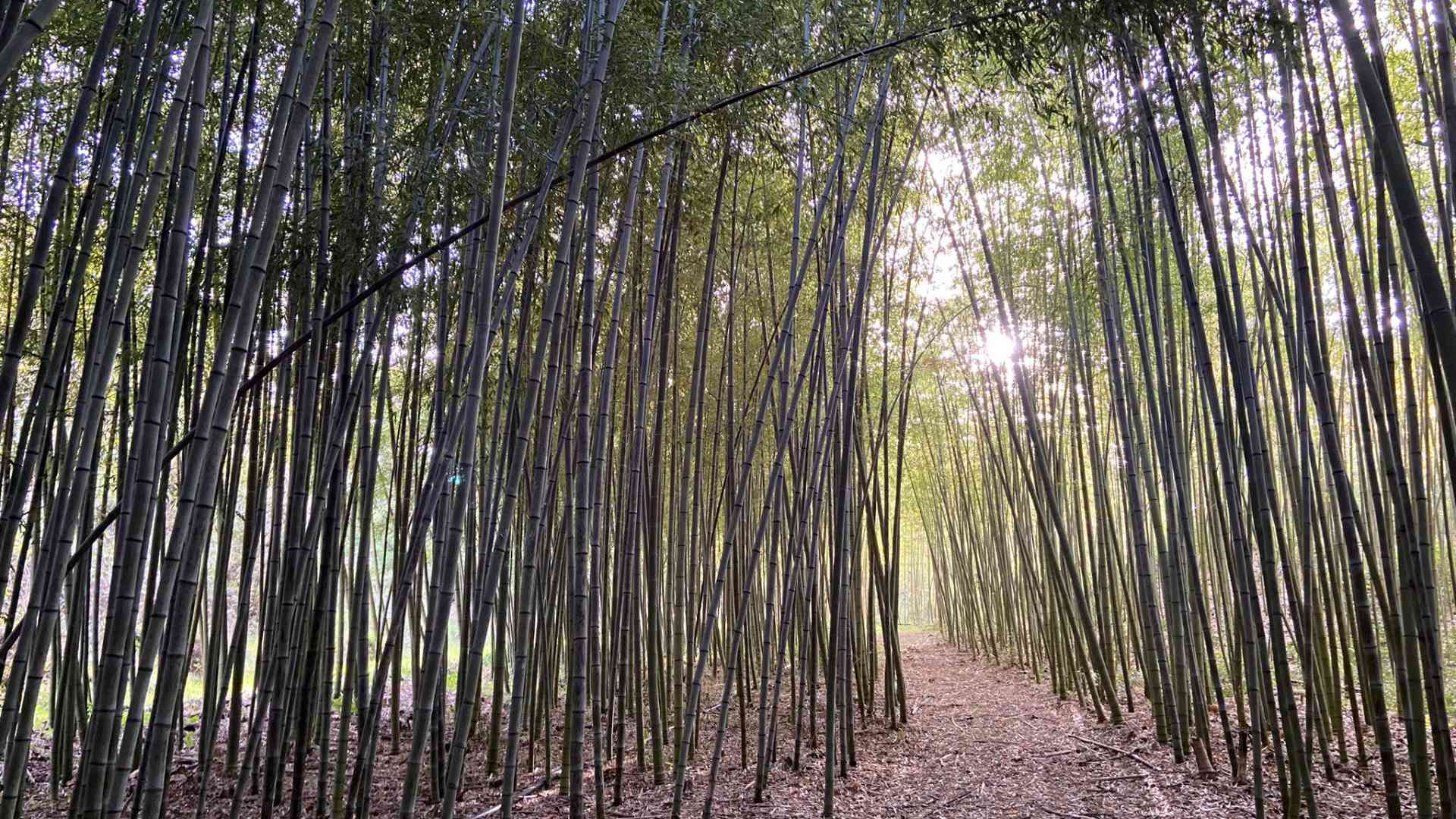
What is carbon sequestration?
Carbon sequestration refers to the process that happens in conjunction with photosynthesis. Like all plants, bamboo takes in sunlight, water and carbon dioxide, and turns it into vital nutrition (i.e. sugar), and releases essential (to humans) oxygen. Carbon remains as a byproduct of this miraculous formula and gets stored, or sequestered, in the roots of plants and trees.
The carbon, stored inside the plant’s biomass, is called a carbon sink. Carbon sinks are crucial to the earth’s ecosystem and for keeping the atmosphere in equilibrium. As carbon levels in the atmosphere continue to rise, the dangers associated with climate change grow more severe.
So it’s a two-part process. First, plants and trees absorb carbon from the atmosphere. Next, they store this carbon in their roots and biomass.
But every time a tree is cut down, a little more carbon is released from the sink and into the atmosphere. So when great forests in Brazil and Malaysia are logged or burned down, we’re not only losing the trees, which act as the lungs of the planet. Equally catastrophic are the enormous quantities of carbon being released from underneath these ancient forests.

Why is bamboo so good at carbon sequestration?
One of bamboo’s greatest virtues is its fast growth rate. Not only can it grow a few feet a day in peak season, as mentioned above, but the plant can also reach maturity within about five years. That’s compared to 30 or 40 years for a hardwood tree. And that’s an impressive timeline for creating a substantial carbon sink, as well as providing an abundant, versatile resource.
But that’s not all. As a grass, bamboo easily replenishes itself after harvesting. In other words, like a lawn that’s been cut, the bamboo grows right back. Unlike trees and annual crops which get harvested and then need to be replanted, the rhizome roots of bamboo plants live to produce more shoots. Because the bamboo doesn’t die, it doesn’t release its carbon sink the way a tree does after it’s cut down.
Here’s an interesting feature of bamboo. Bamboo shoots (culms) reach their full height in a single growing season. Each year, the new culms come out bigger and bigger, until the plant reaches maturity. This is usually 5 or 6 years, depending on the species. By that time, the canes should be achieving their maximum size with each season. The poles from the earlier years may continue to produce lateral branches and leaves, but they will never get any taller or thicker around.
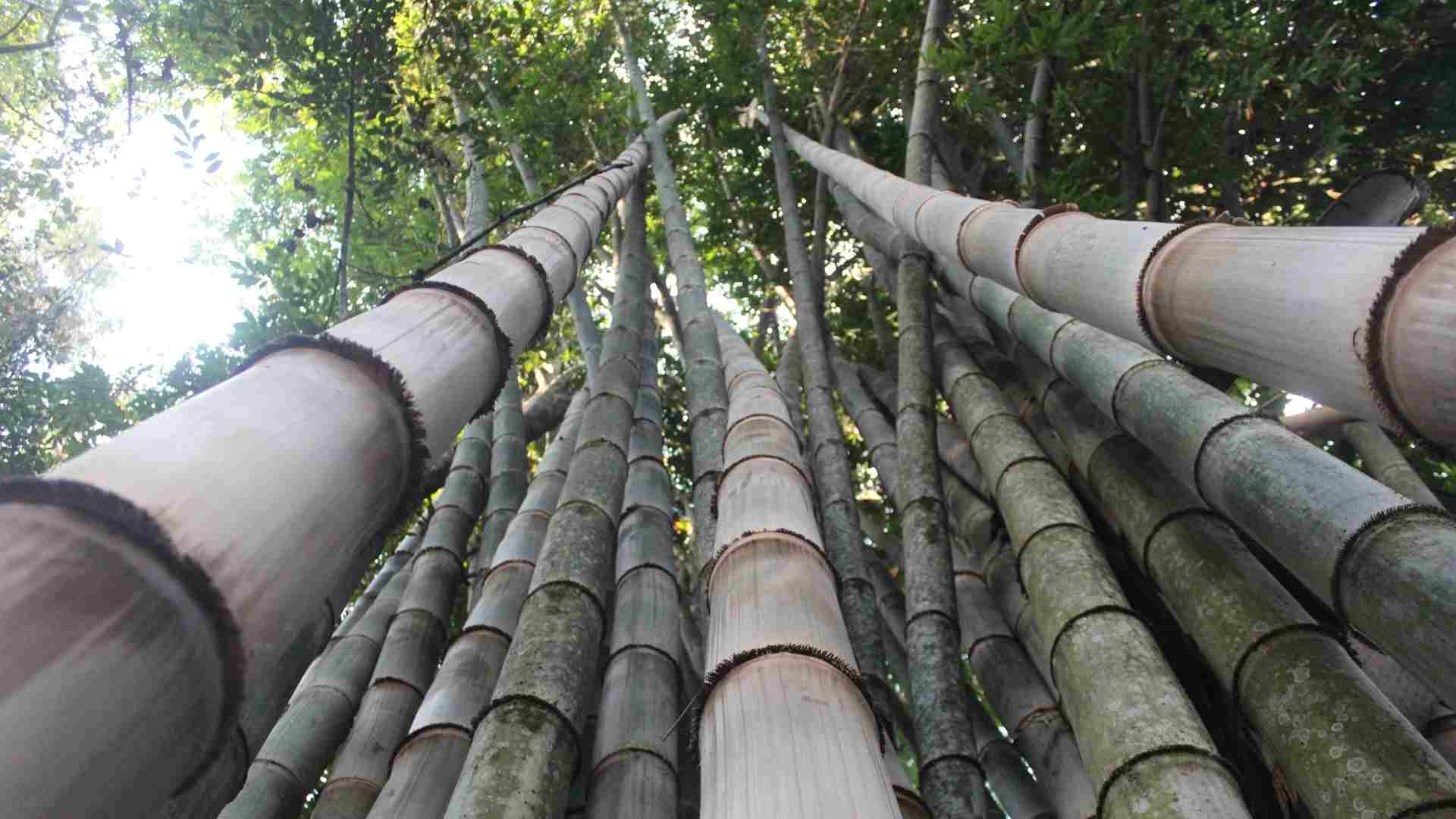
Bamboo for perpetual harvest
When the canes of a mature bamboo plant are harvested, the new culms that sprout up the following season will get to be just as large. This means it can be harvested annually, and the harvest will not reduce the following year’s yield. On the contrary, harvesting bamboo actually encourages the plant to produce more numerous shoots.
And because the massive rhizome root system remains intact, there’s no great spill from the carbon sink like there is when logging trees. All of these factors should convince us to support more cultivation and use of bamboo in construction, as a greener alternative to lumber.
A fast growth rate means a high metabolism. And that suggests that bamboo can probably convert CO2 into oxygen faster than other plant life. Japanese studies indicate that bamboo can capture 12 tons of carbon dioxide per hectare per year, whereas Chinese estimates are more like 5 tons per hectare.
In Uganda they have measured differently, saying that every square meter of bamboo can absorb 267 kilos of CO2 per year. So the numbers vary quite a bit, and reliable figures may be hard to come by. The results will also depend on things like climate and the species of bamboo.
Calling bamboo’s potential into question
A study conducted by the journal Plant Biology and published in 2016 calls some of those ardent claims into question. Based on their preliminary measurements from a small crop of Bambusa vulgaris, these scientists are suggesting that bamboo may actually be a net carbon producer. Unlike trees which capture carbon, they are claiming that bamboo acts more like rice, which releases more CO2 over the course of its life than it stores.
But other experts cast doubt on these findings, as they only looked at the gas emissions over a 24-hour period for one single species of bamboo. No one has yet to conduct a close study that looks at the carbon absorption and efflux over the complete lifespan of a bamboo plant. And most botanists and bamboo experts agree that a 24-hour study is far from reliable when it comes to assessing bamboo’s total carbon sequestration over several years.
Another study published in the Global Ecology and Conservation journal represents the more widely held belief that woody bamboo is more comparable to hardwood in terms of carbon sequestration. Findings from this research indicate that bamboo does sequester significant quantities of carbon and can provide a permanent carbon sink. Additionally, the study suggests that bamboo can and should provide opportunities for carbon farming and carbon trading.
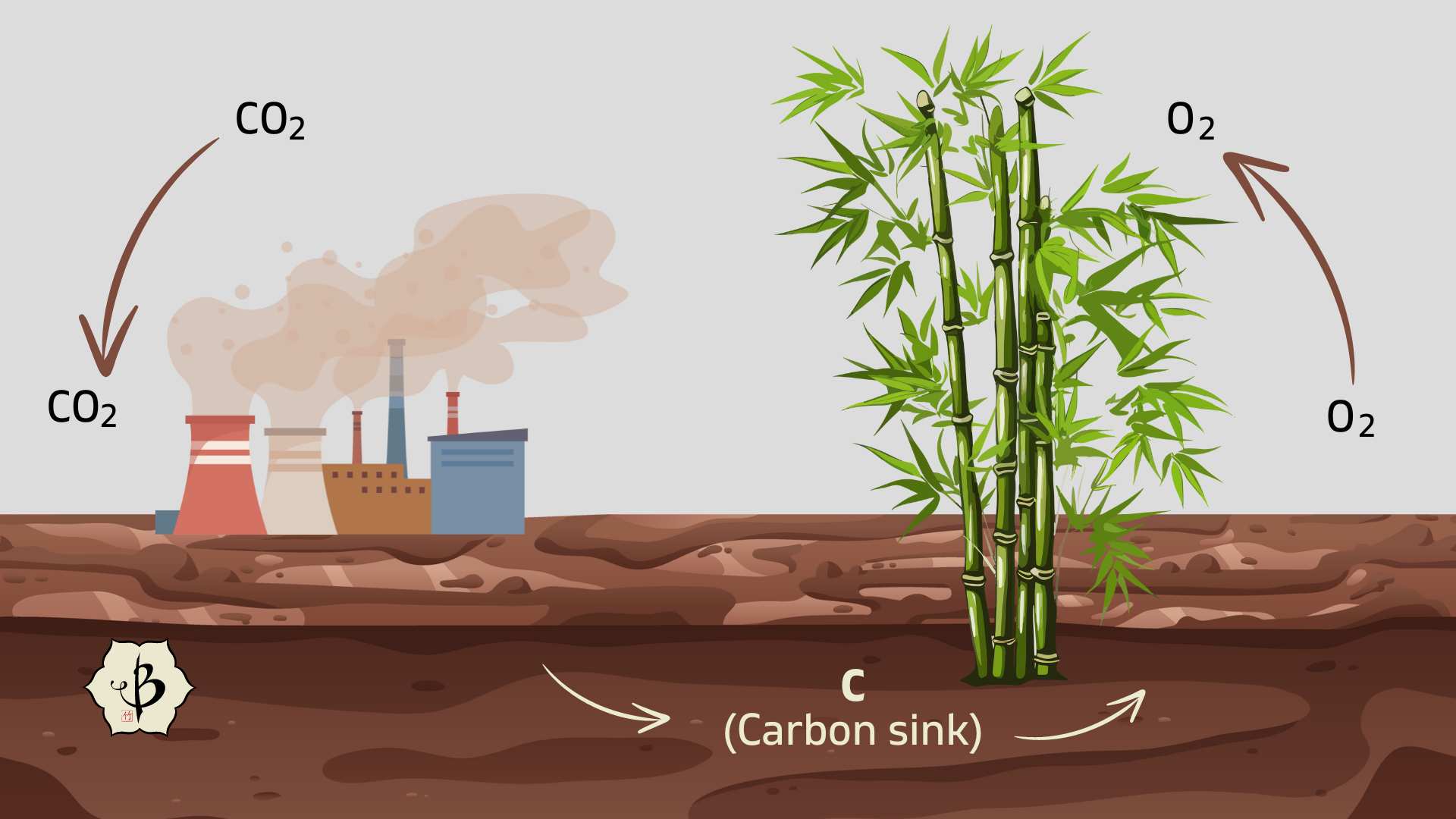
Bamboo leads the way toward net-zero carbon
Net zero refers to the desired balance between the quantities of carbon and greenhouse gasses being released into the atmosphere and being removed from the atmosphere. Because of its tremendous capacity for capturing and storing carbon, bamboo can play a vital role in the move towards net-zero carbon. And with more and more corporations, countries and municipalities setting net zero goals, we can be sure that bamboo will only grow in popularity.
Pursuant to the Paris Climate Agreement of 2016, the European Union and a number of countries like Canada and Chile have pledged to achieve net-zero climate neutrality by 2050. Other countries, like Austria and Finland, have set even more ambitious goals, to be carbon neutral by 2040 and 2035, respectively. The state of California aims to be neutral by 2045.
One way for companies to achieve carbon neutrality is through what’s called carbon trading. This market-based solution allows businesses that are carbon negative (capturing or avoiding more than they emit) to earn carbon credits and sell them to businesses that are carbon positive. In this way, companies with higher emissions can still achieve carbon neutrality by supporting carbon-negative enterprises.
One such company that offers another kind of carbon footprint offsetting is the Bamboo Village Uganda (BVU). The BVU invites international businesses to participate and invest in bamboo and the developing economy of Uganda by purchasing parcels of land and planting bamboo. This provides a responsible way to offset emissions and earn carbon credits, while at the same time combating poverty in Africa.
Bamboo for carbon credits
There’s a lot of buzz about the carbon credit market these days, and we cannot overlook this as a possible monetization strategy for bamboo growers. As of 2022, however, there is no certification standard for generating bamboo carbon credits in the US. In any case, the international market for carbon credits is volatile but potentially lucrative. And it’s something we are following very closely.
As of 2023, more companies than ever are exploring bamboo agroforestry as a way of generating carbon credits, in Africa, India, the Philippines, and beyond. We are especially excited about bamboo biochar, a charcoal-like product in which the carbon is fixed and stabilized. When applied to the earth, biochar increases soil fertility and creates a carbon sink that can last for many centuries. It’s a very practical and beneficial use for bamboo offcuts, or for whole bamboo poles in regions where there’s no well-developed value chain for bamboo products.
If you’re interested in discussing the very latest information on bamboo for carbon credits, in the US and elsewhere, take a look at our in-depth article on Growing Bamboo for Carbon Credits or contact us to schedule a consultation.
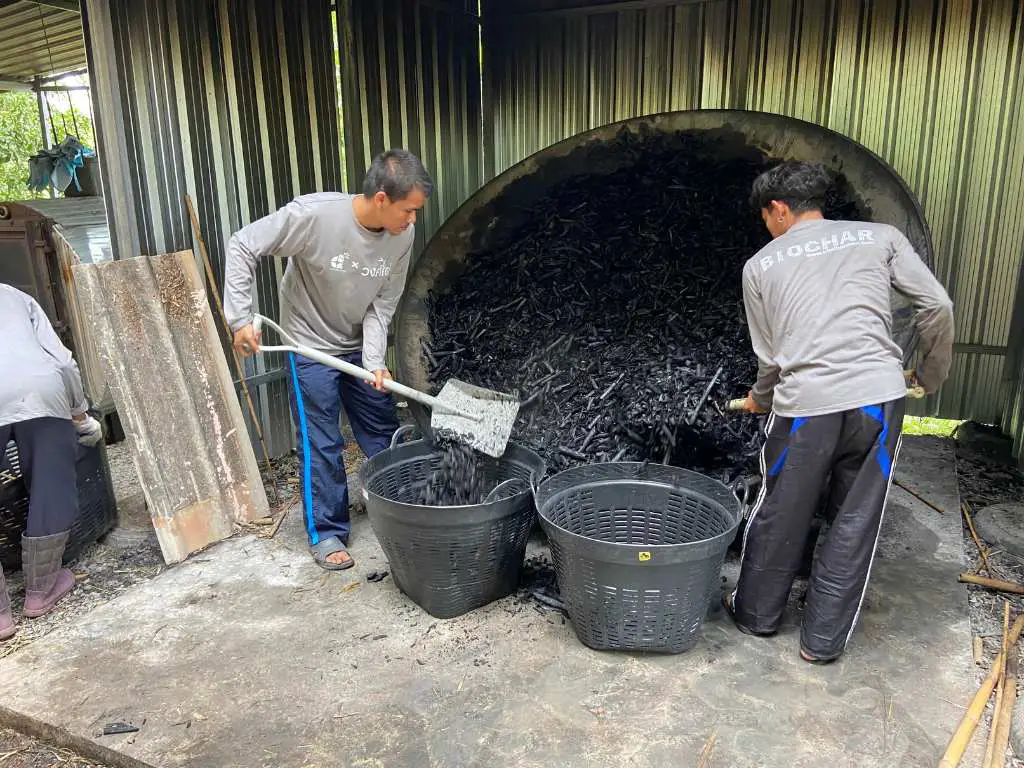
Conclusions
The environmental benefits of bamboo are astonishing. When you look at the complete life cycle of the plant, which matures in 5 or 6 years and can be harvested annually without pesticides or heavy fertilizers, it seems almost too good to be true. But we really have no reason to doubt bamboo’s incredible potential as an alternative to logging, steel and plastics.
Bamboo’s capacity to reduce carbon and improve the atmosphere is not limited to its growth habit. As a versatile building material, bamboo can also reduce our reliance of more intensive carbon emitters, like plastic and concrete.
This doesn’t mean we should try and become 100 percent dependent on bamboo for all our building needs. But we should definitely encourage more cultivation of this incredible plant. At the same time, we need to continue to monitor the ways in which it is grown, harvested and processed. Only in this way can we ensure that bamboo continues to play a critical role as a climate solution.
Further reading
If you found this article useful and interesting, please consider sharing the link and subscribing to our blog. You might also enjoy some of the these other popular blog posts.
- The benefits of bamboo
- Bamboo for erosion control
- Bamboo and ecology
- Common questions about bamboo
- The world’s 20 greatest bamboo gardens
Other sources:

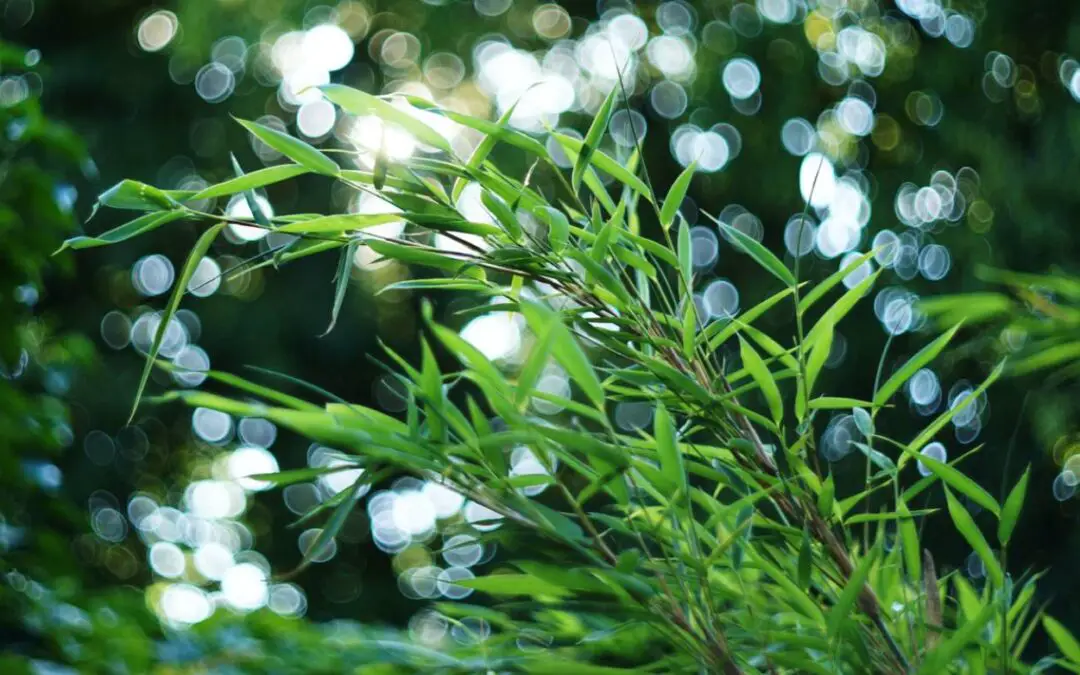
























Hello, your site is quickly becoming my “go to” site for information on bamboo. Great work, much appreciated.
Thanks Zoe!
Elon Musk’s 100 million offer is waving at you!
LOL! Bamboo captures carbon just for the love of it, without financial incentives!
We plant the 180 hectares bamboo in Laos, we need some one help about how to earn the money from carbon trade.
Thanks
Lim
Message me directly. Let’s talk about biochar.
I am very passionate about Bamboo cultivation and growing in different countries and different parts of the world I saw how bamboo helps to build our development in our family,House,society, culture and participate in every part of our Life but we Ignore Bamboo I want to work to grow the Bamboo Industry Globally Hope we can work together in the Future, waiting for your reply…..
Thanks for reaching out. Let’s find a time and do some spit-balling.